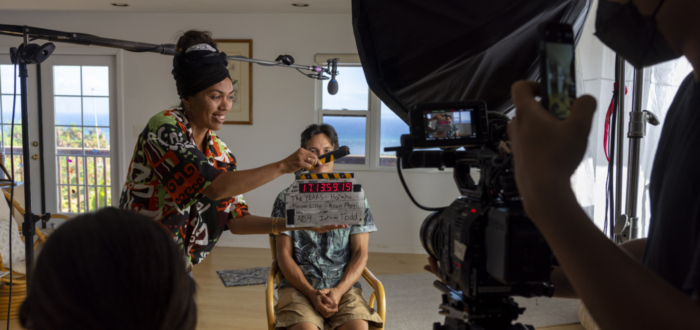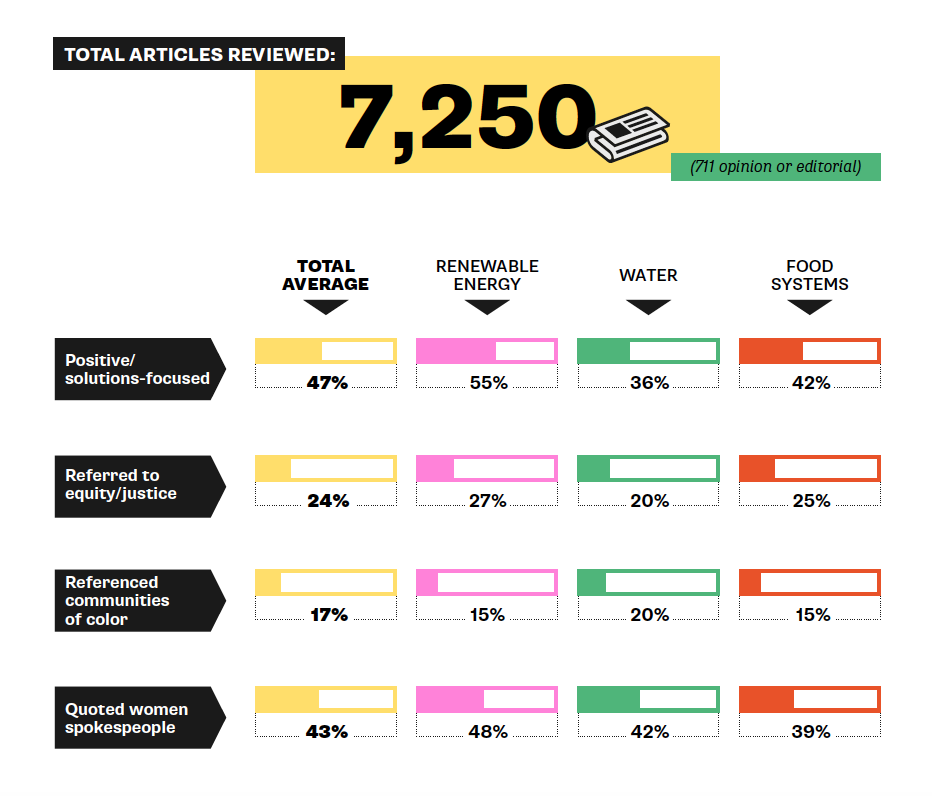
HOʻĀHU ENERGY COOPERATIVE. Photo credit: Keri Oberly for The Years Project
Narratives and dominant worldviews influence our values, and shape how we think,
and how we relate to each other. Media is essential in influencing the public discourse
and shaping our perspectives. Too often, current narratives fail to capture the voices
and experiences of Black, Brown, Indigenous, and other communities of color. And
when there are stories about our communities, it often portrays us as victims instead
of showing us as decision makers, changemakers, and visionaries. At The Solutions
Project, we fund the people closest to the problems because they are creating the
most intersectional solutions. We amplify their stories because we know communities
on the frontlines have the power to shape their own narratives.
We are in a pivotal moment where digital media is taking activism to a new level,
newsrooms are building climate teams, and audiences are demanding for climate
stories in films and entertainment. Not just any stories – stories that are focused on
solutions to the climate crisis, narratives that give us hope and allow us to reimagine a
world that’s more equitable and sustainable.
In 2018, we started tracking media trends to analyze three things: (1) media’s coverage
of equity, justice, women’s leadership, and communities of color in regards to
renewable energy, (2) the public dialogue and narrative on renewable energy, and (3)
how funding gaps in climate philanthropy correlates with a lack of media coverage. In
2021, we also examined articles focused on food solutions and water systems.
Our annual Climate Solutions Narrative Trends Report showed us journalists were
increasingly connecting equity’s role in the renewable energy transition. Out of the
articles we sampled on renewable energy, our research found that:
• In 2018, only 7% referenced communities of color
• In 2019, only 6% mentioned equity, justice, and communities of color
• In 2020 and 2021, the death of George Floyd and the Movement for Black Lives
helped drive national discussion of equity issues, which in 2021 set a record
number of articles referencing issues of equity and justice at 30%
Journalists were writing more renewable energy stories that centered people and
recognized that communities of color played a pivotal role in innovating climate justice
solutions. This year as we reflect on our 2022 sample, we found that articles covering
communities of color were more likely to focus on solutions; such as regenerative
agriculture and food access. This shift pushes back against the trend of most articles
centering solutions coming from governments. Additionally, we found that a majority
of the people who were quoted in articles identified as women.
Another key insight with this year’s report is the significant amount of coverage of
electric vehicles and charging stations (10% of renewable energy coverage); yet there
is a big difference when we compare that with public transportation (2%) which many
Black, Indigenous, People of Color and low-income communities rely on in urban areas.
When we cover solutions, we need to ensure that we’re discussing a diverse and
equitable range of experiences across communities.
We also noticed that there was a slight decrease in the articles that had an equity
lens. After the resurgence of the Black Lives Matter movement in 2020, corporations
and governments were quick to put out statements on justice and talk about
commitments to equity. Referenced above, our reports in 2020 and 2021 were
reflective of this dialogue and saw a record increase in coverage of equity and
communities of color. It’s too soon to tell if the coverage increase over the last few
years was just a trend, or a true shift. What we know for sure, is that philanthropy
needs to continue to support building up more communicators from communities of
color. It doesn’t just matter what is said, but who is constructing the narrative. This is
why programs like Communicating Our Power matter.
This is an opportunity for us to demonstrate that the last few years were not just
a moment, but real steps towards transformational change. From the Justice40
Initiative to the recent celebration of the Inflation Reduction Act, there is progress, but
we need action and implementation – and we need to ensure that we don’t lose sight
of equity and justice along the way.
Communities inspire us. Communities transform narratives. Communities innovate
solutions. Philanthropy has the opportunity to invest in the power of grassroots
communities. Media has the ability to uplift and amplify community-based solutions
and stories. Let’s join forces, each doing our part, to resource and support the
frontlines.
¡Sí, se puede!
In solidarity,
Gloria Walton
